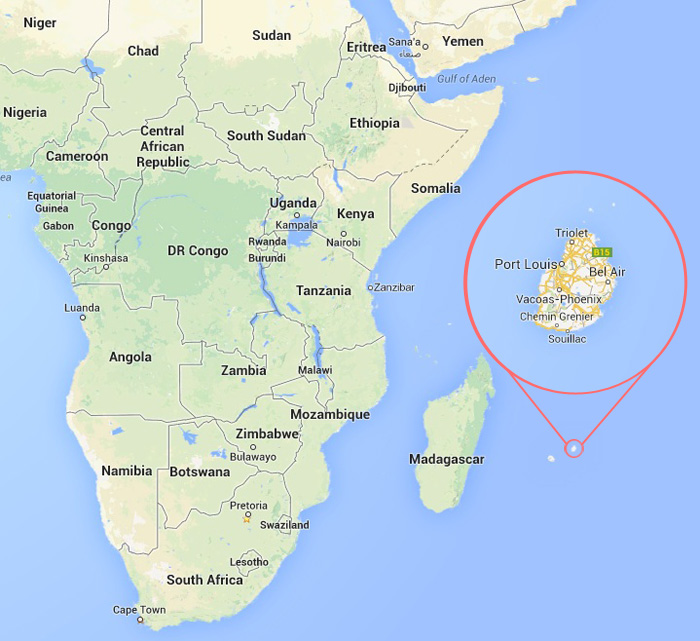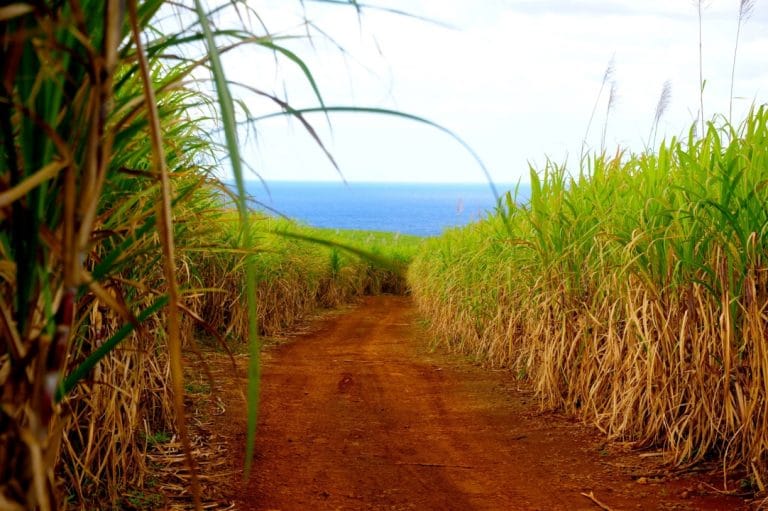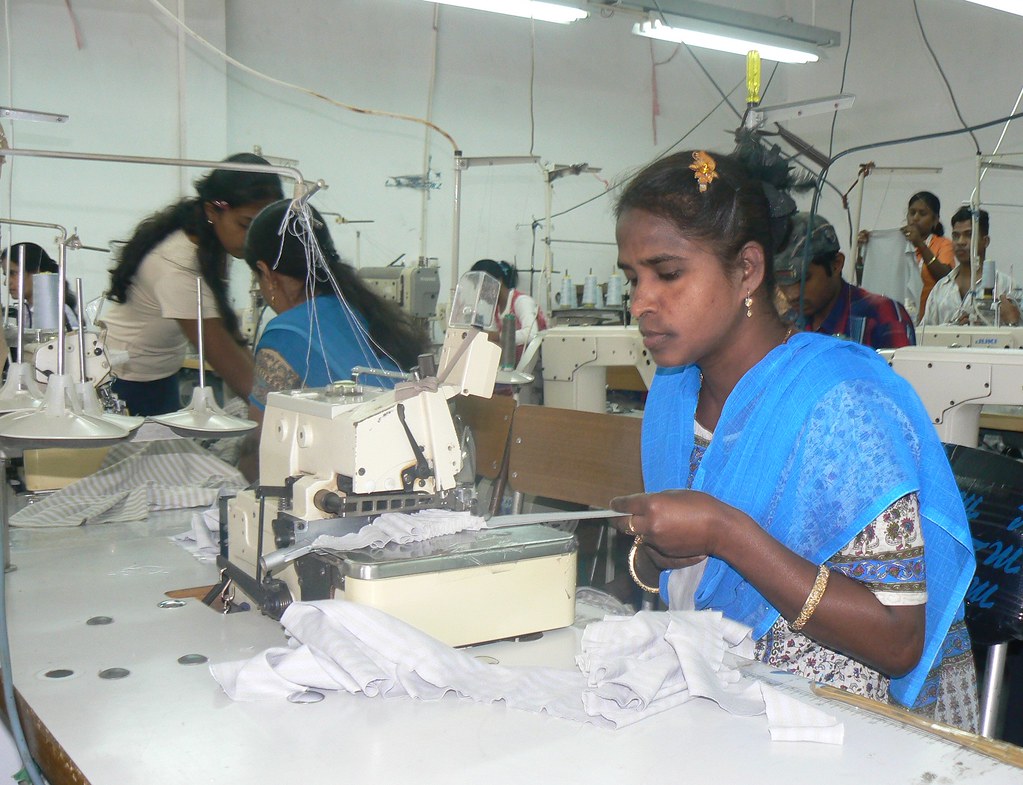A series of notes from the world’s developmental frontier…

Mauritius is an island roughly 60 kilometres long and averaging just over 30 kilometres wide, located 850 kilometres east of Madagascar in the Indian Ocean. It is also the most complete and equitable economic development success story in Africa.
Mauritius was uninhabited prior to the arrival of Europeans. Its original connection to the African continent was the importation by the French in the 18th century of slaves from Madagascar and Mozambique to work sugar plantations that dominated the colonial economy. In 1810, the British took Mauritius to prevent it being used as a base for attacks on British shipping. French sugar growers were left to carry on, except that from 1835 slavery was prohibited; over the next 70 years, 450,000 Indian labourers were imported to replace the African slaves, on harsh contracts termed indentures. By the time of independence in 1968, this meant that half the population was Hindu Indian, one sixth was Muslim Indian, 30 percent was Creole (as the descendants of the slave population are known), and small fractions were French and Chinese.
Political tensions were high around independence. Franco-Mauritian sugar barons believed they would be subjected to Hindu political hegemony after the British left and their capital was moved off the island; the Creole population also feared Hindu political dominance. It was in these circumstances that Mauritius’ first premier, Seewoosagur Ramgoolam, set out to forge a developmental coalition.
Senior political figures representing Franco-Mauritian and Creole interests were invited to join the post-independence cabinet. Ramgoolam, an avowed socialist, embraced several institutions that linked government to the private sector dominated by the Franco-Mauritian elite. The most important was the Joint Economic Council (JEC), a forum in which key political and business leaders met on a regular basis, usually at the prime minister’s office. The tone was set for a developmental state in which government and private sector were partners, albeit with the government as the dominant partner.
A compromise with sugar

The biggest issue between Ramgoolam’s Labour Party and the Franco-Mauritian elite was how the post-independence government would deal with the sugar estates that dominated Mauritius’ economy, exported their profits and did little to address the island’s chronic unemployment. In the 1950s, many in the Labour Party favoured nationalisation of the farms of the so-called ‘sugar barons’. However, in the context of the coalition Ramgoolam found a more subtle but developmentally effective approach. His government created a Mauritius Sugar Syndicate as the sole sugar exporter, repatriating all proceeds which were not permitted to be invested offshore. And a tax on gross sugar receipts was introduced, initially at 5 percent.
Concurrently, incentives were established to encourage the sugar barons to invest in labour-intensive manufacturing. An Export Processing Zone (EPZ) – one without geographic limits – was created. Any approved factory enjoyed duty-free import of equipment and components and extremely generous income tax concessions for 20 years. The right to unionise was denied, unlike in all other parts of the economy, and the minimum wage was set lower than outside the EPZ. The prospect of tax-free earnings from manufacturing was combined with steady increases in the tax on sugar receipts, which rose from the initial 5 percent to a peak of 23.6 percent in the 1980s.
The fiscal environment meant there was no sense in new investment in sugar (except for smallholders who were exempt from the tax). Sugar barons had already dabbled in local non-sugar businesses prior to independence under a tariff protection scheme designed to reduce imports and foster local industry. They therefore confronted the export-oriented manufacturing promoted by the EPZ with a modicum of experience outside the sugar business. The key to the EPZ was Mauritius’ quota-free and duty-free access to European Economic Community (EEC) markets, which the island was granted from June 1973 under the EEC’s Yaoundé (later Lomé) convention for former African colonies.
The Mauritian government’s promotion activities drew a small number of mostly Hong Kong and French garment firms to invest in early EPZ factories. The sugar barons offered themselves as local partners with cash to invest. After the first year of the zone, six factories were operating, with 640 workers. By the end of 1976, there were 85 EPZ factories with 16,404 workers, representing the beginnings of a revolution in employment fortunes in Mauritius, which experienced unemployment rates in excess of 20 percent. Knitwear was the dominant product.
The dawn of full employment

The Mauritian economy experienced a crisis brought on by excessive government spending and the second global oil shock at the end of the 1970s and start of the 1980s. However, the attraction of the local garment sector to international investors seeking diversification of production operations, plus a local economic elite pushed by government and fiscal incentives to invest in garment factories, kept the manufacturing sector growing. Indeed, the 1980s turned out to be its boom decade.
During the 1980s, the original woollen knitwear business expanded to a point where Mauritius became the third-biggest exporter in the world. Meanwhile, clothing companies responded to rising costs by becoming more capital-intensive and integrating vertically – larger firms began to make and dye their own fabric in Mauritius. The product range expanded to include everything from shirts to fine-knit items like jogging pants.
By the end of 1990, when the population was one million, there were 89,906 workers employed in 568 EPZ firms — nine out of ten of them in apparel and textile factories. Across its economy, Mauritius had the highest share of EPZ employment of any country in the world. One third of Mauritian workers were employed in EPZ businesses, compared with 10 percent in Singapore, 4 percent in South Korea or 2 percent in Malaysia. The EPZ alone accounted for 12 percent of GDP while sugar-dominated agriculture was 10 percent, down from one quarter in 1970. Unemployment was less than 3 percent.
Across the period from the inception of the EPZ in 1970 through 2000, Mauritian GDP rose by an average 5.8 percent a year, increasing from less than US$300 to US$4,000 per capita. Meanwhile, the rise of manufacturing helped Mauritius become a far more equal society than fellow fast-growth story Botswana because it offered opportunities to almost all Mauritians of working age, not least women. The Gini coefficient of income inequality, where one represents perfect inequality and zero perfect equality, decreased from 0.5 in 1962 to 0.42 in 1975 and 0.37 in 2000 — the latter on par with Taiwan, the economy whose development produced the lowest income inequality in East Asia. By 2000, Mauritius had almost no poverty by World Bank measures.
Manufacturing is special
The impulse to greater income equality delivered by the rise of manufacturing was complemented by policies in agriculture to support smallholder famers. In addition to the exemption from the sugar tax for producers of less than one thousand tonnes per year, government required sugar mills to give smallholders an improved share of sugar extracted from canes and sugar estates to provide parcels of land, as well as cash payments, to any workers laid off. The policies contributed to a degree of social mobility among smallholder farmers and estate workers that did not previously exist.
Subsequent to the garment and textile boom, what were once pure sugar businesses expanded into diversified conglomerates, the largest with turnovers of hundreds of millions of dollars a year. Mauritius, although still an island of only 1.3 million persons, offered or created opportunities in hotels, luxury real estate for wealthy foreigners, offshore financial and information and communications technology (ICT) services, and more. Government continued to support diversification efforts. Mauritian GDP per capita maintained its ascent, from less than US$300 in 1970 to US$11,000 in 2019.
The island’s annual GDP growth from 1970 to 2019 averaged 5.2 percent, or 4.4 percent per capita — compared with 1.3 percent per capita across sub-Saharan Africa. Growth with social equity saw Mauritius rise to ‘high-level’ status on the United Nation’s Human Development Index (HDI) as early as 1996. HDI combines GDP growth with progress in education and life expectancy to give a broader measure of human welfare. Today, Mauritius is the only country in Africa – including north Africa – to be ranked at the topmost ‘very high-level’ by HDI score.
Although the share of manufacturing in Mauritian GDP declined rapidly in recent years, falling from a peak of more than 20 percent in the 1980s to just 11 percent in 2020, its role in the rise of Mauritius cannot be overestimated. As the economist Dani Rodrik showed*, manufacturing is the only sector of an economy that provides an automatic ‘escalator’ for increasing productivity levels. Consequently, only those developing economies which built substantial manufacturing sectors exhibited the unconditional convergence with productivity levels of rich countries that orthodox economics assumes will happen in any poor country with access to global technologies.
Mauritius is unique in Africa for having used a manufacturing strategy to lift itself from poverty to rich-world living standards in just two generations. An agricultural policy that supported smallholders while redirecting capital from large sugar estates to garment manufacturing was the necessary precondition. The lesson about the special role of manufacturing in developing countries ought to be clear to every African state. And yet the continent has almost no other examples of governments developing and deploying coherent manufacturing strategies.
*Rodrik, D., 2013, ‘Unconditional convergence in manufacturing’, The Quarterly Journal of Economics, 128(1).

